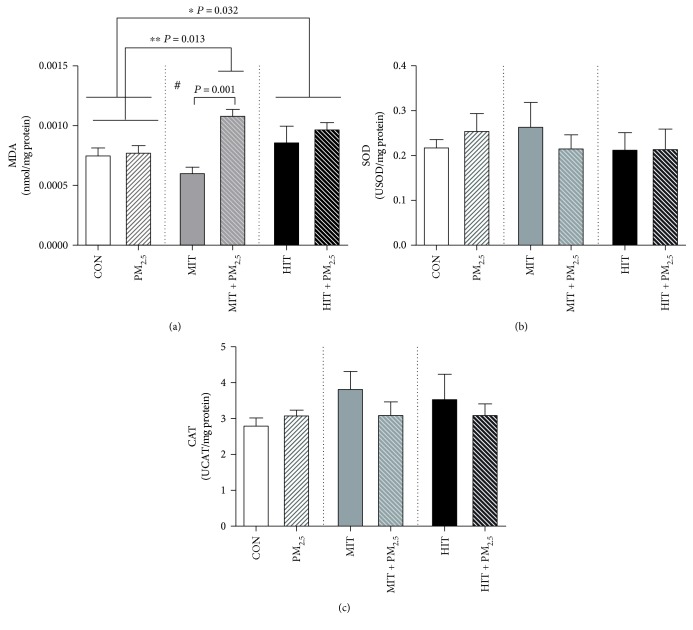Figure 1.
Effect of 12 weeks of exercise training combined with PM2.5 exposure on heart oxidative stress profile in mice. Lipid peroxidation levels (a), superoxide dismutase (b), and catalase activity (c) in the heart. CON = control, maintained sedentary. MIT = moderate intensity training. HIT = high intensity training. PM2.5 = exposed to PM2.5, maintained sedentary. MIT + PM2.5 = moderate intensity training exposed to PM2.5. HIT + PM2.5 = high intensity training exposed to PM2.5. PM2.5 groups received 5 μg of PM2.5 daily (nasotropic) while respective controls received saline. Data analysed by two-way ANOVA followed by Tukey's post hoc test and expressed as mean ± SEM (n = 5-6 per group). Lipid peroxidation levels (a): PM2.5 effect (P = 0.0006), exercise effect (P = 0.170), and interaction (P = 0.012). Post hoc analyses: ∗HIT and HIT + PM2.5 versus CON and PM2.5 groups (P = 0.032), ∗∗MIT + PM2.5 versus CON and PM2.5 groups (P = 0.013), and #MIT + PM2.5 versus MIT group (P = 0.001). Superoxide dismutase activity (b): PM2.5 effect (P = 0.811), exercise effect (P = 0.334), and interaction (P = 0.078). Catalase activity (c): PM2.5 effect (P = 0.339), exercise effect (P = 0.472), and interaction (P = 0.488).

